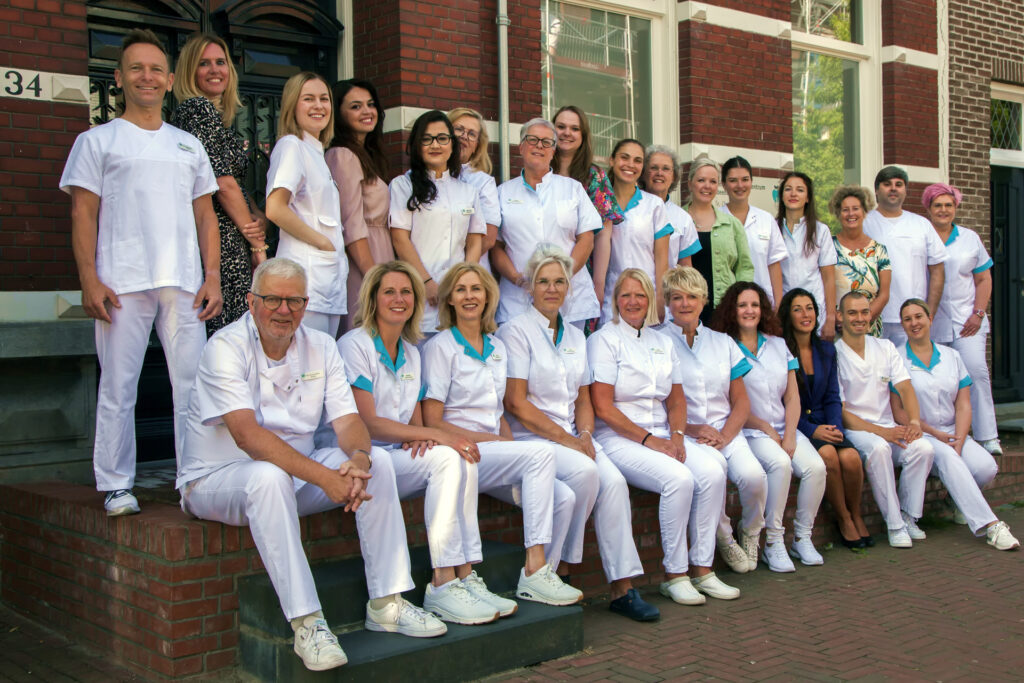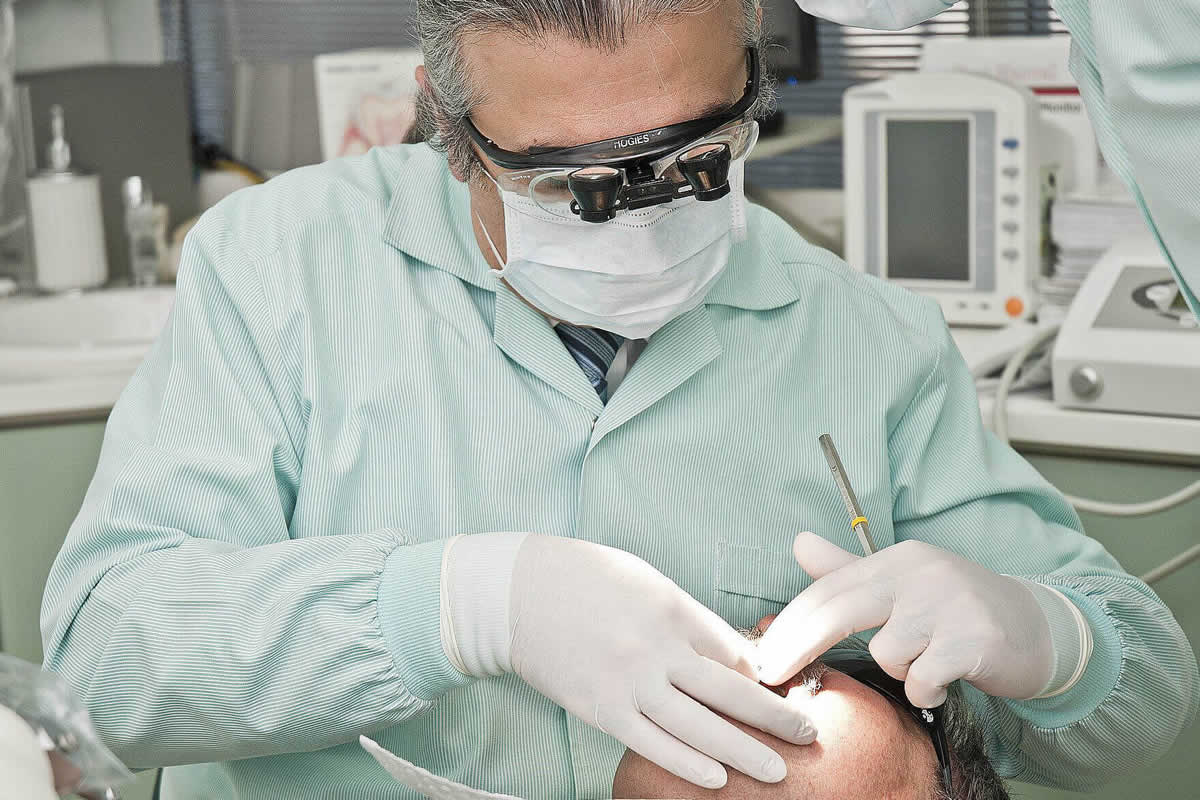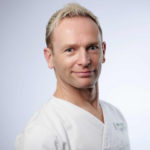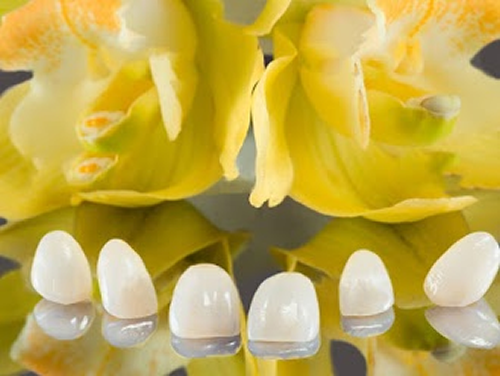Leestijd: 2 minuten
Evenwicht tussen verwijderen en behouden.
Voor menselijk weefsel bestaat geen echte vervanging. Dit geldt ook voor het materiaal in de mond, en met name de tanden. Het is altijd lastig om het delicate evenwicht te bewaren tussen behandeling, waarbij zoveel mogelijk rotte materialen moeten worden verwijderd, en het behoud van onaangetast weefsel.
In het verleden is in de tandheelkunde vaak gekozen om veel tanden en weefsel te verwijderen en te vervangen door kunstgebitten en prothesen. Echter, de materialen, apparatuur en technieken zijn sterk verbeterd. Dit geeft de mogelijkheid om te kiezen voor een nieuw concept in de tandheelkunde: minimaal invasieve tandheelkunde.
Minimaal invasieve tandheelkunde legt de nadruk op het behoud van tandweefsel, als onderdeel van behandeling en verzorging. Het doel is om zoveel mogelijk gezond weefsel te behouden en tegelijkertijd de verspreiding van infecties, met name tandbederf, te voorkomen.
Hoe wordt minimaal invasieve tandheelkunde toegepast in een tandartspraktijk?
Dankzij onderzoek is het concept van de minimaal invasieve tandheelkunde geëvolueerd. Dit heeft geresulteerd in de ontwikkeling van de volgende drie factoren die de praktijk in belangrijke mate beïnvloeden:
- tandheelkundige materialen;
- tandheelkundige apparatuur;
- operatietechnieken.
Tandheelkundige materialen
De materialen leunden vroeger sterk op een voorbereiding welke gezond tandweefsel kon aantasten. Een voorbeeld hiervan is het gebruik van amalgaam, waarvoor een bepaalde voorbereiding nodig was waarbij een deel gezond glazuur moest worden verwijderd. Hetzelfde was het geval bij de voorbereiding van kronen.
Met nieuwere materialen, zoals composiet en cement, moeten slechts minimale hoeveelheden tandweefsel verwijderd worden om restauraties en prothesen stevig op hun plaats te houden. Dit is te danken aan het feit dat nieuw ontwikkelde materialen gebruik maken van chemische reacties tussen tandweefsel en het tandmateriaal, in plaats van op voorbereidingstechnieken.
Nieuwe tandheelkundige materialen hebben als onderdeel van minimaal invasieve tandheelkunde ook de weg geplaveid voor preventie. Het aanbrengen van een laklaag (sealant) bij pas doorgekomen kiezen van kinderen maakt het gemakkelijker om de tandoppervlakken schoon te maken. De sealant voorkomt de innesteling van bacteriën en helpt tandbederf te voorkomen. Dit bevordert de mondgezondheid al op jonge leeftijd.
Tandheelkundige apparatuur

Nieuwe apparatuur helpt tandartsen om ingrepen met meer precisie uit te voeren. Tandheelkundige loepen en microscopen maken het veel gemakkelijker om zeer kleine structuren te zien die met het blote oog moeilijk te zien zijn.
Bijvoorbeeld: met tandheelkundige microscopen is toegang tot de wortelkanalen tijdens wortelkanaalbehandeling veel makkelijker en voorkomt de noodzaak tot het verwijderen van veel tandweefsel. Dit leidt ook tot een hoger slagingspercentage bij veel van deze ingrepen.
Met behulp van de verbeterde apparatuur is het nu mogelijk om veel meer geïnfecteerd weefsel te verwijderen, zodat nieuwe infecties, die leiden tot het mislukken van de behandeling, zelden optreedt.
Operatietechnieken
Nieuwere materialen en apparatuur gaan gelijk op met de ontwikkeling van nieuwere technieken die nu door tandartsen worden gebruikt. Op alle gebieden zijn oude tandheelkundige theorieën en behandelingen herzien door de beschikbaarheid van betere technologie. Daarom zijn er nu meer behandelingsmogelijkheden voor patiënten, waardoor zij hun gebit ook op latere leeftijd kunnen behouden.
Voorbij zijn de dagen het verwijderen van tanden de enige optie was. Minimaal invasieve tandheelkunde is nu de standaard voor tandartsen. Hierdoor wordt het trekken van tanden alleen nog gebruikt als laatste redmiddel.
Minimaal invasieve tandheelkunde is nu de norm voor tandheelkundige zorg
Het Journal of American Dentistry heeft verklaard dat de vooruitgang in de wetenschap van grote invloed is geweest op de technieken die in de tandheelkundige praktijk worden toegepast. In feite is het doel van minimaal invasieve tandheelkunde om uiteindelijk te voorkomen dat tandbederf het gezonde tandweefsel aantast.
Het doel van een tandheelkundige behandeling is om de esthetiek, maar vooral ook de functie van de mondholte te herstellen. Daarbij is het behoud van zoveel mogelijk gezond weefsel een onderdeel van het doel.
Er zijn momenteel een aantal behandelingsmogelijkheden en materialen beschikbaar die de sterkte van het tandweefsel kunnen benaderen, maar er is nog niets dat het origineel kan vervangen. Dit is precies de reden waarom tandartsen tegenwoordig pleiten voor minimaal invasieve tandheelkunde. Zowel de tandarts als de patiënt kunnen zich op hun gemak voelen in de wetenschap dat het natuurlijke gebit nog jaren behouden kan blijven.
De beleving staat centraal
Onze toegankelijkheid laten wij graag zien. Wij nodigen u uit om uw vragen aan ons te overleggen. Dat kan via onderstaande naw gegevens of het contactformulier.
Tandheelkundig Centrum Steenbergen
Grote Kerkstraat 34
4651 BB Steenbergen
0167 – 563 780
info @ tandheelkundigcentrumsteenbergen.nl





